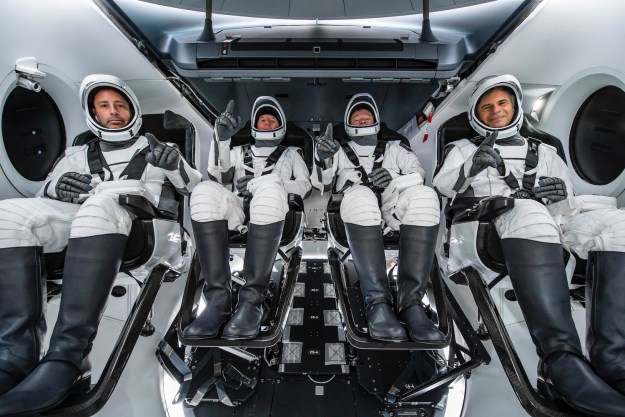Three-and-a-half days into its mission and around 320,000 miles from Earth, the James Webb Space Telescope is now gradually opening up from the compact shape that enabled the enormous apparatus to fit inside the rocket’s fairing on launch day.
Having already completed two successful burns and the deployment of its solar array and antenna, the Webb team is now starting the most challenging part of its early operations: Opening the giant sunshield.
About the size of a tennis court, deploying such a large piece of kit is no easy feat, and if it goes wrong, the $10 billion telescope could miss its chance to peer into deep space in the hope of unlocking some of the secrets of our universe.
The good news is that first two stages of the sunshield’s deployment have been declared a success. They took place on Tuesday and involved unfolding the forward and aft (back) sunshield pallet that will hold the sunshield’s five layers once it’s fully deployed.
You can see how the pallets were deployed in the video below.
“Webb is beginning to resemble the form it will take when it is fully deployed now that the mission operations team has successfully deployed and latched into place the observatory’s forward and aft Unitized Pallet Structures,” NASA said on Tuesday, following confirmation of the pallets’ deployment.
The agency, which partnered with the European Space Agency and the Canadian Space Agency for the mission, said the Webb team began working through the deployment of the forward pallet on Tuesday morning, finishing the process at about 1:20 p.m. ET. It then oversaw the deployment of the aft pallet, which finished at just after 7:25 p.m. ET.
“While the actual motion to lower the forward pallet from its stowed to its deployed position took only 20 minutes, and the lowering of the aft pallet took only 18 minutes, the overall process took several hours for each because of the dozens of additional steps required,” NASA said.
The additional processes included monitoring structural temperatures, positioning the observatory in a way for the sun to provide optimal temperatures, activating heaters to warm key components, setting off release mechanisms, configuring electronics and software, and finally, latching the pallets into position.
More steps are required for the sunshield’s full deployment, with Sunday, January 2 set as the target date for completing the process.
Following that, the telescope’s large, golden mirror has to be deployed in what will be another nail-biting process for NASA and its partners, as well as those following the mission from around the world.
The most powerful space telescope ever built is currently heading toward its destination orbit — a point known as L2 — around a million miles from Earth. It’s expected to arrive there toward the end of January.
After that, around five months will be needed to align the telescope’s mirror and fine-tune its instruments.
Once all of these processes are complete, the James Webb Space Telescope can then properly begin its highly anticipated work that’s expected to take human understanding of the universe to a whole new level.
Editors' Recommendations
- Swatch lets you put a stunning Webb space image on a watch face
- Watch the splashdown of NASA’s first private ISS mission
- James Webb researcher on how telescope will investigate exoplanet atmospheres
- James Webb Space Telescope has gone cold, but that’s good
- One of James Webb’s first targets is Jupiter. Here’s why


